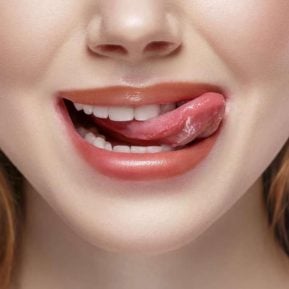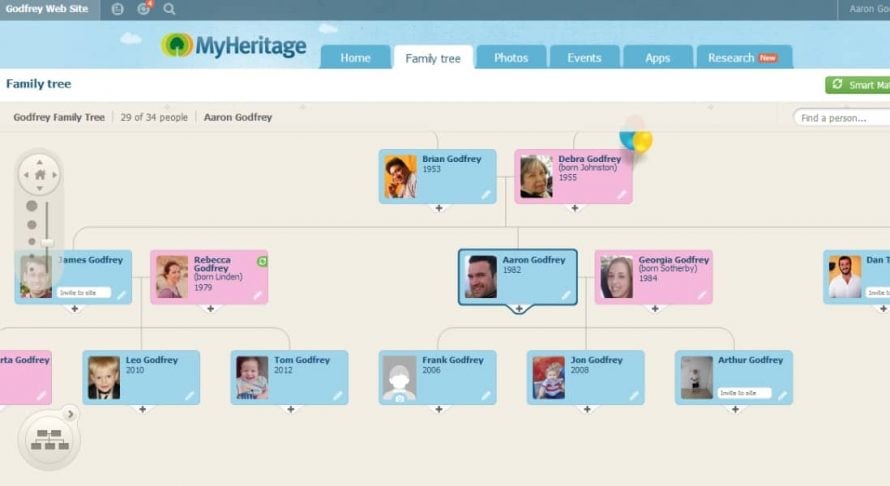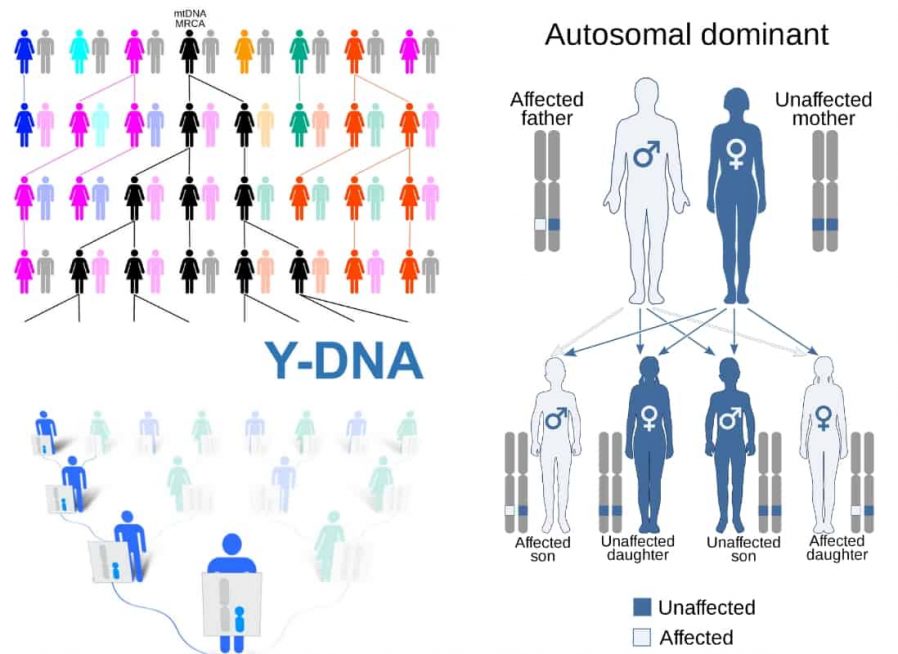
The Best DNA and Ancestry Products Compared
MyHeritage DNA Guide
- UPDATED December 2025
Trace Your Family's Roots and Find Your Ethnicity.
DNA test kits give you a convenient way to learn about your family from the comfort of your own home. Once you read our MyHeritage DNA test guide, you may want to order one yourself.
Advertising Disclosure
Many or all of the companies featured provide compensation to us. These commissions are how we maintain our free service for consumers. Compensation, along with hours of in-depth research, determines where & how companies appear on our site.
PROS
- Lets you pick the language that is right for you
- Gives you access to more than eight billion online records
- Results come in an easy to read format
CONS
- Only offers one of the more basic forms of DNA testing
- Results will not show any health information or give details about your overall wellness
BOTTOM LINE
With a test kit from MyHeritage, you can finally find answers to all those questions you have about your family. The kit is easy to complete and gives you access to billions of historical records.
What is a Home DNA Test?
Anyone who watches television shows such as “Law and Order: Special Victims Unit” has heard the term DNA before. Every human being on the planet has genetic markers that distinguish them from other people. Lawyers and judges use DNA to prove paternity in court cases and to show that criminals are guilty of certain crimes.
The DNA that you carry in your genes can help you understand more about your family too, including where they started out and which regions they lived in through history. MyHeritage offers a DNA test kit that you can use at home to find out about your family after you submit a simple sample.
FEATURED GENETICS EXPERT

Our MyHeritage DNA test guide makes it easy for you to see the pros of this kit and to discover some of the cons. As it is quite similar to other tests such as the AncestryDNA and 23andMe tests, we’ll also do a direct comparison to the competition. You can use that comparison to decide whether you want to order this test or one of the others. We’ll also include information about what comes inside the box and how you can take the test as well as how you’ll submit your sample.
Who's This for?
The MyHeritage DNA test is really for anyone who has an interest in genealogy and family history as well as those who want to know where they came from. While open adoptions are common today, closed adoptions were more common in the past. With an open adoption, the adoptive parents have contact with one or both birth parents and can share information with each other. Closed adoptions require that the court seal the adoption records and stops the birth parents from having any contact with the adoptive parents or the child. If you are an adopted child, you may want to find out who your parents were/are and whether you have any full or half-siblings.

This test allows you to see what ethnicity you are and whether you share chromosomes with more than one ethnic group. You can compare your results to others who used the service to find relatives via the site. Prospective relatives have the option of sending each other messages and responding to those messages. You can also create a detailed family tree that includes your birth and adopted relatives. MyHeritage will tell you almost everything you want to know about your family.
What Comes in Your Kit?
MyHeritage does a good job of packing its DNA test kit. You’ll receive a cardboard box that slides open from each end to reveal the contents inside, which include:






Before you take the test, we recommend opening the package and comparing the items listed above to the items that come in your kit. While other kits such as AncestryDNA allow you to submit a saliva sample, this kit requires a swab taken from the inside of your cheek. Both the swabs and the vials allow you to take that sample, while the envelope and bio-hazard bag let you send in your sample for testing.
You may want to read through the included instructions too, especially if you never took a DNA test before. The instructions will tell you what the test will show you and go over what you need to do submit your sample. You’ll also help helpful information about the things you shouldn’t do before taking the test. Something as simple as drinking a cup of coffee a few minutes before can degrade your sample or make it impossible for you to take a swab of your cheek.
How to Take the MyHeritage DNA Test
Many people prefer the cheek swab sample required by this test than the saliva samples that others require. When you take a saliva sample, you need to spit into a container, which can be a little messy. You also risk producing too much spit and seeing it fall over the sides of the container or not producing enough and having your test come back with no results found. Before taking your sample, you’ll want to remove the two cheek swabs from the kit and from their packaging. You can then sit or stand with your mouth open as you carefully run the swab across the inside of your cheek for at least 30 seconds but no more than 60 seconds. Many find it helpful to stand in front of a mirror and to set a timer on their phones.
You will then place the swab inside one of the plastic vials and seal it closed before repeating these steps with the second swab. MyHeritage asks for two cheek swabs because it knows that mistakes can happen. Even if you do not swab your cheek correctly with the first swab, the second one should have enough DNA for the lab to run its tests. You will then put both swabs in the bio-hazard bag and put the bag inside the included envelope. This envelope has postage already stamped on the front for mailing your samples to the lab.
Tips for Taking the MyHeritage DNA Test


at least 30 minutes before taking the test



What the Test Shows
The type of DNA testing that MyHeritage uses is one that lets it find matches based on your genes Instead of simply telling you that you come from Europe, it takes each continent and breaks it down into multiple regions. This test actually identified 42 distinct regions around the world. It has an Ethnicity Estimate that estimates how many of your genes connect back to each of those regions and shows you how those ethnic groups moved and changed over the years. Once you click on this feature after getting your results, you’ll see a big reveal that makes learning about your heritage more fun.
Access Your Family Tree on Any Device

MyHeritage is one of the only home DNA test kit companies that helps you take the guesswork out of tracking your family and designing your family tree. It can actually show you photos on the site of long-lost relatives you never knew existed and family members you only heard stories about in the past. You can use all those resources to build your own family tree and to fill in any gaps in your family’s history. This test does a very good job of showing you the genetic markup of your family line.
DNA Matching
Most of the more popular DNA home tests today give you the option of matching with potential family members online. MyHeritage offers this through a service it calls DNA Matching. While you can opt out of this feature, it’s a good way to find relatives who were adopted years ago and the children they have. This feature went live in 2016 and compares the chromosomes found in your sample to the samples submitted by other users. It allows you to view potential relatives and see how closely each of those individuals are to you.
This feature allows you to view an estimated relative and see whether that person is a first cousin or a more distant relative. With a free account, you can then view that individual’s family tree and look for names that sound familiar to you and those names that are also on your own family tree. You also have the chance to contact that person for free. If you agree to let the site share your own results, you may find family members checking out your family tree and sending you messages too. MyHeritage reworked the DNA Matching feature to make it more accurate.
Benefits of DNA Matching
- More accurate than other tests
- Gives you up to 10 times more matches than other tests do
- Lets you view family trees for free
- Allows you to contact potential matches
- Estimates your relationship and connection to others on the site
How Much Does the MyHeritage Test Cost?
This is where MyHeritage really distinguishes itself. MyHeritage gives you an affordable way to test your genes and to learn more about your genealogy. While other tests charge as much as $99 or even $199, you can get this DNA testing kit directly from the site for just $79. Your kit will come with the cheek swabs and everything else that you need to take a sample and ship it back. As you also get an envelope posted with the lab’s address on the outside, you can send it right to the lab without paying any extra too.
Even if you buy the kit and don’t qualify for free shipping, you’ll find coupon codes online that cover the shipping cost. Prime members can get the test for the same low price and receive free shipping. MyHeritage does offer some discounts that other sites don’t though. It often drops the price of the kit down to around $50 during the holidays. If you buy three or more kits, the site will give you free shipping too.
Relatives You Can Have Take the Test





Using MyHeritage to Establish Paternity
A paternity test is one that labs use when establishing paternity and determining who is the biological father of a child. These tests can use hair and blood samples, but one of the more basic tests uses a simple cheek swab. Though the founders of MyHeritage created the kit as a way to help individuals learn more about their families, you can also use the kit to establish paternity. Let’s say that you were in a relationship with a woman who later had a baby and claimed you were the father. If you aren’t sure if this is true, you can actually use the kit to see how close you are related to that child or if you share any genes in common. You can also use this kit if you have questions about whether the man who raised you is actually your biological father.
To use MyHeritage as a paternity test, you must purchase two kits. You’ll need to use one kit for yourself and the second for the adult or child you want to test. It can take a full six weeks for MyHeritage to test both the kits supplied and to put your results online. You’ll need separate accounts for each kit.

Benefits of Proving Paternity with DNA
- Stop child support payments for a child who is not yours
- Prove in court that you are or are not the father
- Learn more about your own genes
- Find your biological parent
- Make changes to custody agreements
Smart Matches
One of the top features of the MyHeritage test that you won’t find with other tests such as the AncestryDNA kit is something called Smart Matches. When you create your account, you need to make sure that you click on the box next to this feature. This tells the site that you want to activate it. As your results come in, MyHeritage will compare those results to the millions of other samples in its database. It will create a list of Smart Matches, which are matches in found in the database that share genes or chromosomes with your own sample. You can view the total percentage of genes that you share in common too, which helps you see whether that person is a distant relative such as a fourth cousin or a closer relative such as an aunt or uncle.
The Smart Matches feature can also scan the database for any family trees that list the same names and dates as your own tree. This feature runs every few days but can take up to a week to do a full scan. As you make changes to your tree, the site will do new scans based on the information you added.

What to Include in Your Family Tree
- Direct Relatives
- Potential Relatives
- Any Ancestral Records
- Adopted Relatives
- An Enthusiasm To Learn
Should You Buy It?
When you decide to check on your DNA, you will probably wonder which of the tests you should use. Our article on 23andMe and AncestryDNA kits is a good place to start because it shows you a direct comparison between those two tests. You can also use the competition section below to see how MyHeritage stacks up against AncestryDNA and other testing services. Asking yourself some of the following questions is a good way to see if MyHeritage is the right choice for you.
- Do you want an affordable DNA test that also gives you access to public records?
- Are you ready to find out everything about your family, including things you might not want to know?
- Do you want an easy and convenient way to reach out to potential family members online?
- Have you read about the problems with saliva samples and want to take a cheek swab instead?
- Do you want to work with a site that will do some of the research for you and show you any matches it finds?
If even one of these questions describes your current situation, you’ll find that MyHeritage is the right at-home DNA testing kit for you.
Different Types of Home DNA Tests

The Competition
AncestryDNA is the main competitor to MyHeritage. It features the backing of Ancestry.com, which is the world’s leading genealogy research site. Not only can you pour through all the public records that help you verify information, but you can use the message boards to connect with other users and potential family members. The downside to this test is that you need to pay extra to use all the available online resources. You can learn even more about this test in our AncestryDNA review. Ancestry is both more expensive and takes longer for you to get your results back.
LivingDNA is one of the only other companies that accept a cheek swab. It charges $79 for a test kit and does three different types of tests on your swab. This test can show you information about the genes that your father passed onto you and those that his father passed onto him. 23andMe is a very popular test for those who want to do genetic screenings at the same time that they get a DNA test. This test asks for a saliva sample and gives you results in up to eight weeks. 23andMe charges more than MyHeritage does for the same type of DNA test.
MyHeritage DNA Test Pros
More Specific
MyHeritage DNA is much more specific and can reveal more information than you find with other tests, including both the 23andMe and AncestryDNA tests. The issue with other tests is that they often consider major parts of the world as one region. You might see that you are 62% European but have no idea of whether you are Irish or Polish. MyHeritage divides larger regions into smaller ethnic groups. Your results might show that you are a certain percentage of both Irish and Scottish as well as Eastern European and Asian. Many people find it helpful to take multiple tests and compare the results of each one.
Family Tree Software
The family tree software offered by this site can go right along with your DNA test. Once you create your account and start using the site, you can get right to work on your tree. The software makes it easy for you to upload details about your parents and grandparents and any other relatives you want to add. It also allows you to share your tree and add information that you get from others and to add some images to your tree too. As you connect with others on the site and get information from them, you can make your tree even larger and create branches that link to those other trees.
Good Customer Support
MyHeritage makes it easy for users to find everything they need online, but it also offers good customer support for those who need more help. If you have any questions after reading through the institutions, you can call the company directly before you take a cheek swab. The forums that are open to users are another great feature of this site. Those forums allow you to post questions about why your account isn’t working or how you can read your results. You’ll get responses from both customer service representatives and other users.
Public Records
Though Ancestry.com gives you access to a large number of public records, MyHeritage lets you use more than nine billion records without paying any additional fees or charges. You get full access to the census records posted by the government after it completes a new census every 10 years. The census lets you search by name or address. It shows you the total number of people living in one residence, what they did, their full names and what they did for a living. The site also includes voter registration lists that can also help you track names, ages and addresses.
Safe for All Ages
Taking a saliva sample from a baby or an infant is almost impossible. You need to provide enough spit to completely fill a vial. Even younger children will have a hard time collecting enough saliva to fill one of those sample containers. As MyHeritage uses a cheek swab, people of all ages can use the test and submit their own samples. When taking a sample from your own child, you’ll want to quickly insert the swab and run it along inside his or her cheek. This should only take a few seconds. If your child is fussy or won’t sit still, you can use some toys as a distraction until you take the sample.
Simple Info
We really like that MyHeritage shows your information in a simple format. It actually shows you which ethnic groups you belong to based on the percentage of your genes that match those groups. You might see that you are 90% British, which includes the Welsh, Scottish and Irish groups. It shows you a large globe and marks all the regions where your genes came from based on your results. When you click on any of those regions, you can learn a little more, including what groups there are in that region and which percentage of each group you are.
Private and Confidential
MyHeritage takes several steps to ensure that your results and any other information that you share remains both confidential and private. When you submit your results, no one working in the facility or for the company knows you as anything more than the code shown on your package. You can enter your code into the account that you set up and add more information about yourself. If you decide to connect with another user, the site will only share your username and email address. This ensures that no one will ever contact you in real life without your permission.
Raw Data Download
While MyHeritage shows you some basic information that you can easily read, it also allows you to download your raw data. This information can seem so complicated that you might think you need a medical degree just to read it. There are a number of different sites that allow you to upload that raw data and view all the info that you want to see in a more convenient format. This data can help you see whether you are primarily one ethnic group or if you have a small percentage of genes relating to other groups. Your raw data will include a number of figures that you’ll need up upload to another site to view and understand.
Raw Data Upload
AncestryDNA and similar tests offer a raw data download option but do not offer an upload option. Most of the more popular DNA kits that you can use at home will only do one specific type of testing and may not offer as much information as you expected to see. If you use more than one test, you can easily compare the results of each one and find out if one test missed an ethnic group. Some tests will only show you percentages of 2% to 5% or higher. MyHeritage allows you to upload the results and reports that you get from other tests and to compare those results against those provided by the company.
More Accurate
One of the best benefits of picking the MyHeritage DNA test is that it offers more accurate results than some of its competitors. There is a chance that it might pick up genes that connect to one ethnic group that no other test found. This is especially common among those who come from regions that are close together. Some tests might view most or all of Asia as the same region, but this test will break down Asia into various groups such as Japanese and Korean. It also does a nice job of showing smaller percentages such as 6.9% and 2.1% rather than sticking to whole numbers as other sites do.
Fast Results
When you have a traditional DNA test done, it can take months before your results arrive. At-home tests take less time because the companies that offer these tests work with a wide range of labs and facilities. Most at-home kits supply results in around eight weeks, though it can take six weeks or less before you get your genetic results. MyHeritage offers a faster turnaround of just six weeks, which is the maximum amount of time that it will take. You might get your results in just two to four weeks though. It’s possible to submit your sample at the beginning of one month and to get your results by the end of that same month.
EXPERT QUOTE
“DNA tests are generally incredibly accurate in that if you have a genetic variant in your DNA, it’s unlikely that the DNA was wrong in predicting that you indeed have that genetic variant. Of course, there are caveats, such as tissue-specific expression, – maybe you have a deleterious or beneficial mutation, but it’s not expression because of some other compensating deleterious or beneficial mutation.”

DR. ARTHUR MILLIUS
Ph.D and Genetics Expert
MyHeritage DNA Test Cons
Though other tests have a number of cons, the MyHeritage DNA test does not have as many. One possible issue you face comes when you actually take the test. If you don’t pay attention to what you eat or drink, you might contaminate your sample and make it impossible for the lab to process it. Some wish that this test came with health and wellness screening, but that is only a feature found on the 23andMe test as of 2018. As it does only one type of DNA testing, it’s best for those who want to connect with family members and do some research rather than those who want to trace one line of their families.
It’s also worth noting that this is one of the many at-home DNA testing kits that cannot tell you about any Native American ancestry that you might have. North America is home to a number of tribes, including the Cherokee. Some of those groups offer benefits and incentives to those who can prove they belong to those tribes. This can help you get money from tribe-run casinos and even money for school. You typically need to do your own research to prove your heritage. The tribes require that you show the percentage of Native American blood that you have based on any relatives you have who were part of that tribe in the past.
Final Verdict
Even if your family didn’t come over on the Mayflower or another major ship, you may find that you had ancestors who settled in the United States during the 18th century or even earlier. You can spend hours looking at the dusty records in courthouses and libraries and still not find exactly what you need. As so many people had similar names and so many people changed their names, sorting through those records can be a daunting task. An easier way to find out about your family line is with an at-home DNA test such as the MyHeritage test.
We highly recommend the MyHeritage DNA test for those who want to view their genetic information as a way to find relatives online. The site lets you use Smart Matches to find people who match back to your family tree. It also uses the results of your DNA test to find matches in the database who share some of those same genes. You can find close relatives who took the test and find long-lost family members and those who left your family. We hope the MyHeritage DNA test guide that we offered will help you decide whether to sign up and have the kit shipped to you today.
FAQs
MyHeritage requires that you set up a new account and put the registration code from your kit onto your account. You can then select your own username and password. If you lose either one, you can use the setup help on the site to have the password or username sent to your registered email address. You can also contact the company if you forget both.
The registration code on your testing kit is a unique number that only works with that kit. This means that you need to have one account for each kit. If you want to see the results that other family members got back or you want to share your own results, you can download and share copies with each other.
As the chances are very slim that you won’t get any matches, you may need to wait a little longer. When you make any changes to your family tree, you need to give the site a few days to recognize those changes and find matches for you. If you do not get any matches after three to five days, you can contact the site for help.



